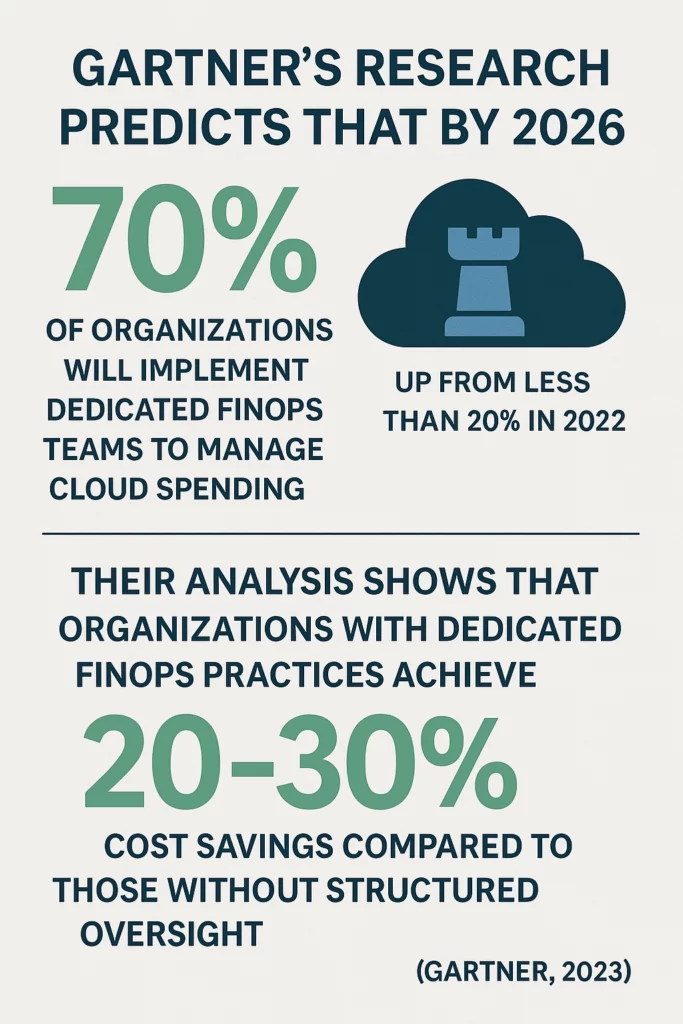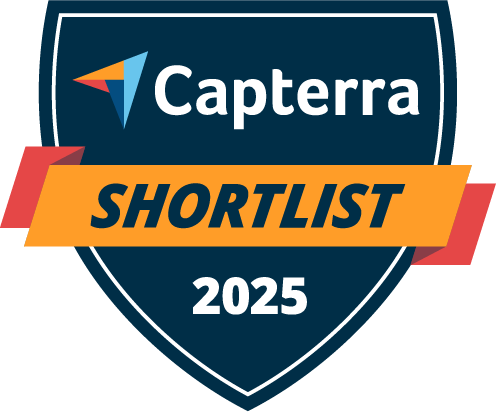Organizations today rely on technology more than ever, yet many struggle to gain full visibility into their IT expenditures. IT budgets cover cloud infrastructure, SaaS applications, cybersecurity, on-premises hardware, and vendor services.
However, the complexity of these systems makes it difficult to pinpoint exactly where funds are allocated and whether those investments yield value. This lack of transparency often results in budget overruns, inefficient resource allocation, and reactive cost-cutting measures that do more harm than good.
The challenge is not just tracking IT expenses but understanding them at a granular level. Many companies operate with broad IT budget categories that obscure the details necessary for strategic cost management.
Without clear, data-driven insights, businesses make financial decisions based on assumptions rather than facts. This lack of visibility not only leads to unnecessary expenditures but also limits the organization’s ability to align IT investments with broader business objectives.
To address this, companies must embrace granular IT transparency, a practice that involves breaking down IT costs into detailed, actionable components.
By achieving deeper visibility, organizations can move beyond simple cost reduction and instead focus on optimizing IT spend, implementing better control mechanisms, and driving higher business value.
The hidden challenges in IT cost management
Despite growing efforts to improve IT cost tracking, several factors contribute to persistent inefficiencies. One of the most significant challenges is the complexity of modern IT ecosystems.
With hybrid cloud environments, multi-cloud strategies, and an increasing reliance on third-party software, IT costs are no longer centralized. Different departments procure and manage their own IT services, leading to fragmentation and a lack of overarching visibility.
Another common issue is shadow IT, where employees or departments purchase software and cloud services outside official procurement channels.
While these tools may improve productivity, they often introduce security risks and unexpected costs. Many organizations do not become aware of these expenses until renewal periods or compliance audits, at which point they must absorb unplanned costs.
One example can look like – Instead of going through the official IT channels, the marketing manager, needing to meet a tight deadline, uses her company credit card to subscribe to a cloud-based graphic design platform (e.g., Canva Pro, Adobe Express) that allows for quick collaboration and asset sharing. She instructs her team to use their company emails to create accounts and begin using the platform.
Additionally, IT costs are often seen as either fixed or predictable, when in reality, they are highly variable. Cloud infrastructure costs fluctuate based on usage, licensing fees change based on employee count, and maintenance expenses shift as new security vulnerabilities emerge. The illusion of predictability leads to budgeting inaccuracies and inefficient cost management practices.
Perhaps most importantly, many organizations fail to tie IT expenditures to actual business outcomes.
Cost-cutting initiatives frequently focus on reducing IT spend without considering the broader impact on productivity, security, or customer experience.
Without a clear understanding of how IT investments contribute to revenue generation, businesses risk making short-term financial decisions that undermine long-term growth.
Stop guessing where your IT budget is leaking.
What is granular IT transparency?
Granular IT transparency is breaking down IT expenses into their smallest measurable components, providing clear, real-time visibility into how resources are allocated. Rather than viewing IT as a single budget line item, this approach enables organizations to track costs at a micro-level, analyzing everything from cloud storage consumption to individual software license utilization.
With granular transparency, organizations can monitor IT expenditures in real time, identifying inefficiencies and cost-saving opportunities before they become financial burdens.
Companies can assess the utilization of their cloud instances, pinpoint underused software subscriptions, and align IT spending with actual business needs. This approach moves beyond traditional IT cost management, transforming IT from a necessary expense into a strategic asset that drives innovation and efficiency.
Industry-specific cost transparency insights
According to Flexera’s 2023 State of Tech Spend Report, organizations waste approximately 32% of their cloud spend, with 30% of software licenses going unused or underutilized. The study surveyed over 500 IT executives and found that only 43% of organizations have high visibility into their IT spend, creating significant optimization challenges (Flexera, 2023).
Quantifiable impact of poor transparency
Research from Forrester reveals that organizations with mature Technology Business Management (TBM) practices achieve cost savings within the first year of implementation. Their analysis found that these organizations make technology decisions more quickly than their peers lacking structured cost-visibility frameworks.
Future trends in cost transparency
According to Gartner, worldwide end-user spending on public cloud services is projected to reach $723.4 billion in 2025, up from $595.7 billion in 2024.

Cloud-specific transparency challenges
According to FinOps key insights, based on data from 1245 organizations, it was found that:
- 43% of cloud spend is allocated to compute resources
- Organizations take an average of 5-8 months to implement cloud cost optimization practices
- Teams with dedicated FinOps resources reduced cloud waste by 33% compared to those without
Software license optimization
According to IDC’s Software Asset Management Survey, organizations waste 20-30% of their cloud spend. Most companies operating on an enterprise level have more licenses than needed for major software vendors (IDC, 2022).
3 key pillars of granular IT transparency
1. Visibility: moving beyond surface-level cost tracking
Achieving cost control begins with complete visibility into IT expenditures. Many organizations have high-level IT budget reports, but these do not provide the detailed insights needed for strategic decision-making. Granular IT transparency involves breaking costs down into categories like compute power, storage, network bandwidth, SaaS subscriptions, and security tools.
Advanced analytics dashboards play a crucial role in this process. By leveraging real-time monitoring tools, companies can track usage trends, detect cost anomalies, and compare spending against industry benchmarks. This level of insight allows organizations to determine whether they are overpaying for certain services and identify areas where optimizations can be made.
For example, a company that was overspending on cloud storage discovered through granular cost analysis that they were maintaining redundant backups, resulting in unnecessary storage costs. By optimizing their data retention policies, they were able to cut expenses by 30 percent while maintaining operational efficiency.
2. Control: turning data into actionable cost optimization
Visibility alone is not enough; organizations must also implement control mechanisms to ensure IT spending aligns with business priorities. One way to achieve this is by establishing automated cost governance policies. These policies set predefined spending thresholds, triggering alerts or automatic adjustments when usage exceeds expected limits.
Another essential aspect of control is proactive FinOps (Financial Operations) governance. By fostering collaboration between finance, IT, and procurement teams, businesses can evaluate IT investments holistically, preventing unnecessary expenditures while maintaining operational effectiveness.
Shadow IT management is also a key component of cost control. Organizations that lack visibility into employee-led software purchases often face security risks and compliance issues.
By integrating automated tracking tools, businesses can detect unauthorized software usage and enforce procurement policies that consolidate IT resources under approved vendors, reducing both financial waste and security vulnerabilities.
3. Value: maximizing IT’s business impact
While cost control is essential, the ultimate goal of IT transparency is to maximize value. IT investments should not be viewed solely as expenses but as strategic enablers that drive business outcomes. By aligning IT spend with organizational goals, companies can optimize their technology infrastructure to support revenue growth, innovation, and customer experience.
Rather than simply reducing IT budgets, forward-thinking organizations use cost savings to reinvest in high-impact initiatives.
By evaluating IT expenditures through the lens of business value, companies can make informed decisions about where to cut costs and where to invest for long-term growth. This shift in perspective transforms IT from a budgetary burden into a critical driver of competitive advantage.
Gain real-time visibility, enforce cost controls, and prove IT’s business value
The future of IT cost transparency
As businesses continue to embrace digital transformation, the demand for IT cost transparency will only increase. The next wave of advancements in this area will be driven by artificial intelligence and automation, enabling predictive cost optimization and real-time financial insights. Machine learning algorithms will anticipate cost spikes before they occur, allowing companies to proactively adjust budgets and avoid unexpected expenses.
Blockchain technology is also expected to play a role in IT financial governance, offering tamper-proof auditing capabilities that enhance accountability and prevent fraud in IT procurement.
Additionally, organizations will begin incorporating sustainability metrics into their IT cost transparency frameworks, optimizing data center energy consumption, and reducing environmental impact.
Conclusion: Making IT transparency a competitive advantage with EZO AssetSonar this year
Granular IT transparency is no longer a luxury; it is necessary for businesses seeking to optimize costs, enhance control, and maximize value.
With EZO AssetSonar, you as a company move beyond traditional cost-cutting approaches and embrace a data-driven strategy, transforming IT into a powerful driver of business success.
Companies that achieve deeper IT visibility, implement proactive cost controls, and align technology investments with business objectives will not only reduce unnecessary expenditures but also unlock new opportunities for efficiency and growth. In an era where technology is the backbone of business operations, achieving financial clarity in IT is the key to sustained competitive advantage.
Frequently asked questions
What is “granular IT transparency” exactly?
It’s breaking down your IT costs—software licenses, cloud usage, hardware depreciation—into small, detailed units so you can see where every dollar is going.
Why do many IT cost control efforts fail?
Because they use high-level budget buckets instead of detailed data. Lacking visibility, teams make decisions based on guesses, leading to overspend.
How does cost transparency help with budgeting?
It exposes hidden costs, lets you forecast more accurately, adjust allocations proactively, and avoid large surprise expenses.
What are leading indicators of poor IT cost control?
Symptoms include unused licenses, over-provisioned cloud resources, surprise invoices, many invoices with inconsistent cost centers.
What is ITFM (IT Financial Management) and how does it tie into transparency?
ITFM frameworks help organizations map, allocate, and manage IT costs transparently—allowing cost data to be tied to business units/projects.
How do chargeback or showback models improve cost visibility?
They assign IT costs to departments by usage (chargeback) or show the usage (showback), making teams aware of what they consume and enabling accountability. (0search17)
What tools or methods do people use to gain cost transparency?
Methods include cloud cost dashboards, expense tracking, usage logs, multi-cost-center tagging, and integrating financial + operational systems.
How often should you review detailed IT cost reports?
Monthly or quarterly for most organizations; real-time or weekly reviews add value where cloud or usage costs fluctuate greatly.
What metrics are most useful for aligning IT spend with business value?
Useful metrics include cost per user, cost per project, software utilization vs license cost, cloud spend by service, ROI on tools.
How do companies avoid “surprise cloud / SaaS bills”?
By enforcing tagging, usage monitoring, budgeting alerts, reviewing contract terms frequently, and shutting off unused resources.
Does more transparency mean more work / overhead?
Initially yes: collecting and integrating data takes effort. But over time it drives automation, reduces guesswork, and saves effort overall.
What are common internal resistance points to IT transparency?
Pushback often comes from departments unwilling to share cost data, from people fearing cuts, or from lack of trust in data accuracy.
How do you balance transparency with security & privacy concerns?
By using role-based access, anonymizing sensitive data, aggregating where needed, and ensuring only necessary cost data is shared.
What’s the business value of investing in transparency instead of just cost cutting?
It enables smarter investments (e.g. shifting money to tools that drive growth), better negotiation with vendors, innovation via freed resources, and stronger operational agility.
How can EZO / AssetSonar help achieve granular IT transparency?
They collect and unify cost & usage data, enable tagging & departmental cost allocation, generate dashboards for license and hardware spend, highlight under-used assets so you can optimize spending.








